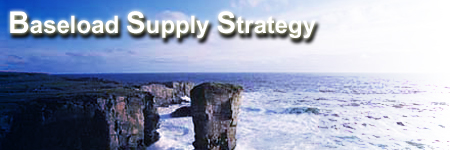


| Areas Avoided |
Constraints References
Constraints
Large shipping vessels, fishing trawlers and other sea users, must avoid certain areas around the Scottish coastline. So even if an area has an abundance of tidal currents, other features may prevent developers being awarded planning permission, restrict marine energy devices being installation or operating.
For example, if a location has been designated a Site of Specific Scientific Interest (SSSI) by Scottish Natural Heritage, then developers may find it very difficult to win consents and should really just be avoided where possible. Alternatively, if a desired site has been used as an explosives dumping ground then drilling monopiles or fixing moorings into the seabed may not be too clever. Also, if a coastal location experiences very dangerous currents such as large overfalls and strong eddies then installation may not be possible. For example, the Gulf of Corryvreckan is a notoriously dangerous stretch of water on the West coast of Scotland where the dangerous overfalls and short periods of tidal slack would make installation of any device on the seabed very difficult and costly.
The Admiralty Charts clearly mark the following areas or features to be avoided:
- Offshore installations e.g. marine cables, pipelines
- Obstructions e.g. wrecks, rocks, reef
- Restricted Area, Explosives dumping ground, Chemicals dumping ground, Contaminated area
- Currents: Dangerous tidal streams, overfalls, tide rips, races, eddies
back to top
References
- British Admiralty, Admiralty Charts.
- British Admiralty, Symbols and Abbreviation used on Admiralty Charts, Chart 5011.
- Scottish Natural Heritage (2002), Facts and Figures 2001/2002, Designated Areas and Sites, Scottish Natural Heritage.